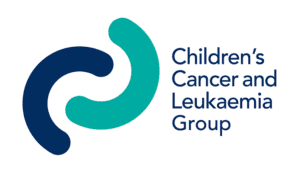Non-Hodgkin lymphoma
Non-Hodgkin lymphoma is a type of blood cancer. About 80 children of all ages develop non-Hodgkin lymphoma (NHL) in the UK each year.
There are two main types of NHL:
- B-cell NHL usually involves the lymph nodes in the abdomen and intestines, but may involve nodes in the head and neck
- T-cell NHL usually affects lymph nodes in the chest.
Occasionally, NHL can develop in unusual places outside the lymph nodes. This is called extranodal lymphoma.
Causes of NHL
We don’t know what causes NHL but there is research going on all the time to try to find out. It is important to remember that nothing you have done has caused the cancer.
Signs and symptoms
The first sign of NHL is usually a lump somewhere in the body, which is caused by swollen lymph nodes.
This can cause different symptoms, depending on where the swollen lymph nodes are. If glands in the abdomen are affected, this may cause a feeling of being full after meals and some stomach pain.
Other symptoms of NHL include a high temperature (fever), tiredness, weight loss, and loss of appetite. In a few children and young people, lymphoma cells may be found in the bone marrow or in the fluid around the spinal cord (cerebrospinal fluid).
How it is diagnosed?
A variety of tests and investigations may be needed to diagnose NHL. Part, or all, of a swollen lymph gland may be removed so that the cells can be examined in the laboratory (biopsy). This involves a small operation that is usually done under a general anaesthetic. Tests such as x-rays, ultrasound scans, MRI scans, CT scans, blood tests and bone marrow samples may be carried out to find out the extent of the disease. This is known as staging.
Any tests and investigations that are needed will be explained to you.
Staging
The stage of a cancer is a term used to describe its size and whether it has spread beyond its original site. The type of treatment depends on the stage of the disease. A simplified version of the stages of NHL is below.
- Stage 1 – one group of lymph nodes is affected, or there’s a single extranodal tumour.
- Stage 2 – two or more groups of nodes are affected, or there is a single extranodal tumour that has spread to nearby lymph nodes; or there are two single extranodal tumours, but only on one side of the diaphragm (the sheet of muscle under the lungs, which plays a large part in our breathing).
- Stage 3 – there is lymphoma on both sides of the diaphragm (either in two or more groups of nodes) or there are two single extranodal tumours or the lymphoma is affecting the chest.
- Stage 4 – the lymphoma has spread beyond the lymph nodes to other organs of the body such as the bone marrow or nervous system.
Treatment
Treatment for NHL has a very good success rate and many people are cured. Chemotherapy is the most important treatment for NHL. Chemotherapy is the use of anti-cancer (cytotoxic) drugs to destroy cancer cells.
It is common for a combination of drugs to be used and treatment may last a number of months or years. The treatment will be planned according to the particular type of NHL and the stage of the disease.
B-cell NHL is treated with 4–8 courses of intensive chemotherapy.
T-cell NHL treatment is less intensive but will last longer – about 2-3 years. Your doctor will discuss the treatment options with you.
NHL can sometimes affect the brain and spinal cord. To stop this, chemotherapy may be injected directly into the fluid around the spinal cord. This is called intrathecal chemotherapy.
Rituximab is an anti CD20 antibody that kills NHL cells by a biological method and is also used in some patients.
Very rarely, radiotherapy is also necessary. Radiotherapy treats cancer by using high-energy rays to destroy the cancer cells, while doing as little harm as possible to normal cells.
High-dose chemotherapy with a bone marrow transplant is sometimes used (again very rarely) if the NHL comes back after initial treatment.
Follow-up care
Once treatment has finished, the doctors will monitor closely with regular appointments in the hospital outpatient department.
Over 80% of the children who get NHL recover completely. The chances of successful treatment depend on the specific type, stage and grade of lymphoma. Your doctor can discuss these details with you.
If you have specific concerns about the condition and treatment, it’s best to discuss them with your doctor, who knows the situation in detail.
This information was written by the Children’s Cancer and Leukaemia Group (CCLG)
You might also want to look at
My child has cancer
If you're a parent or carer of a child diagnosed with cancer, get the right help and advice for us to support you.
My child has cancer
I have cancer
Your go-to place for everything you might need when you've been diagnosed with cancer.
I have cancer
Join our Facebook groups
Meet others with similar experiences, share your views and have your voice heard.
Join our groups
